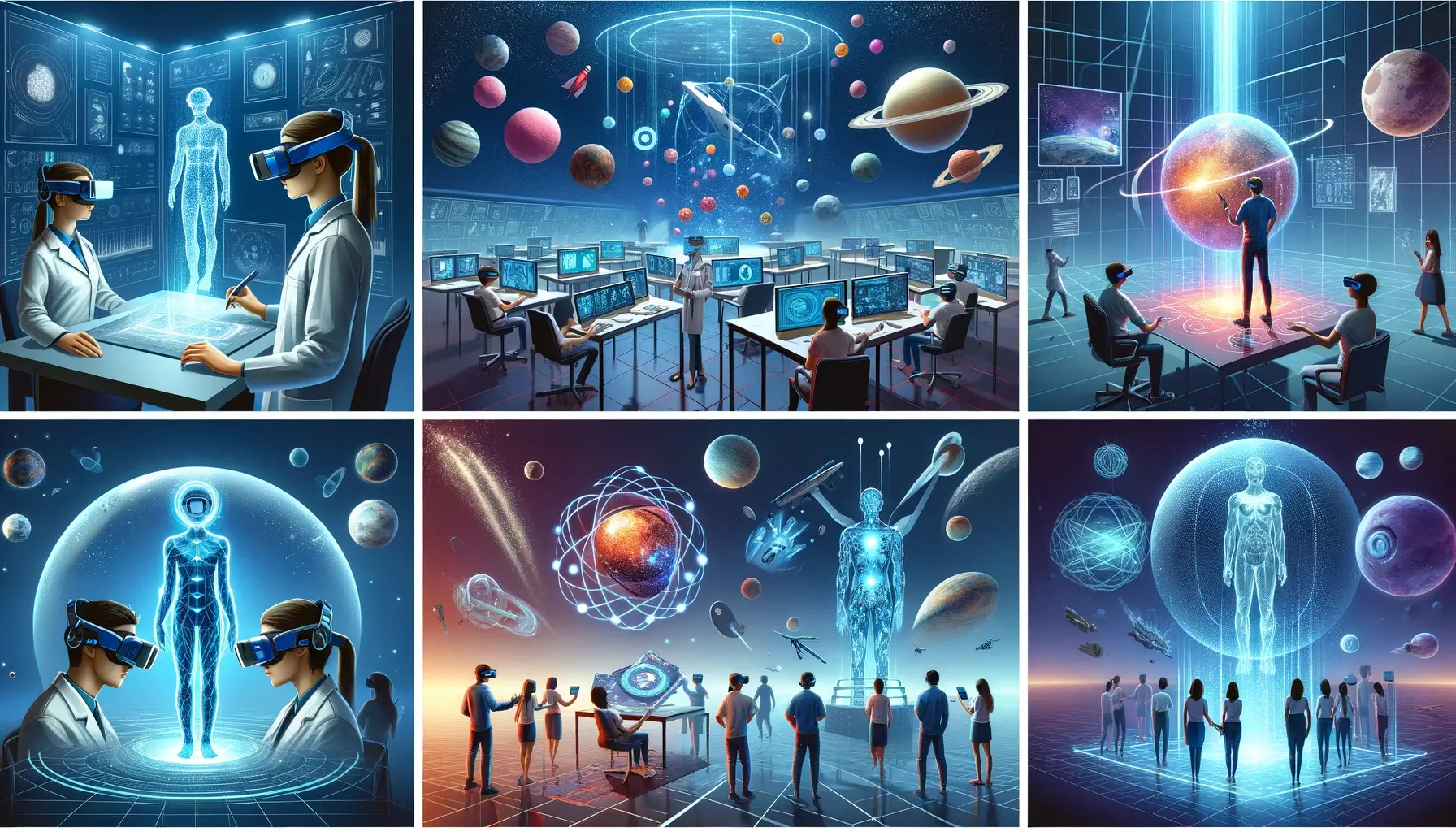 Exploring the XR Landscape at CES 2024: A Comprehensive Overview
Exploring the XR Landscape at CES 2024: A Comprehensive Overview
Welcome to our in-depth exploration of the Extended Reality (XR) showcase at the Consumer Electronics Show (CES) 2024. Despite a somewhat smaller footprint than in previous years, the event’s XR segment spanned multiple venues and exclusive hotel suites, presenting a formidable challenge to attendees eager to absorb the full spectrum of cutting-edge developments in this rapidly evolving field.
The AR/VR sector buzzed with excitement following numerous product announcements at the recent Consumer Electronics Show (CES).
As XR technologies—which encompass augmented, mixed, and virtual reality—continue to emerge, manufacturers are making strides towards broader acceptance among businesses and consumers. This year’s CES spotlighted the debut of innovative mixed-reality headsets, advanced smartglasses, and a cutting-edge Qualcomm chip set to enhance the next wave of devices.
Tuong Nguyen, a director analyst at Gartner, believes that such announcements, particularly at CES, are crucial for driving market growth and the innovation necessary for building a robust ecosystem. This development is essential for the industry’s progression and increasing user adoption.
The Metaverse: A Resurgence in Interest
Despite previous skepticism towards the metaverse and related tech, perceptions began to change with Apple’s Vision Pro reveal last summer. (The device is slated for pre-order this Friday and will be available in stores on February 2.) Additionally, the positive reception of Meta’s Quest 3 headset and Ray-Ban smartglasses has renewed enthusiasm for virtual and mixed-reality gadgets.
Following a challenging year in 2023, where device shipments fell by 8.3% to 8.1 million units—a figure modest compared to the investment in product development—a report from IDC forecasts a 46% sales increase in 2024.
“Mainstream adoption is still a distant reality,”
Nguyen remarked, noting that VR and AR headset usage is currently in the low single digits percentage-wise. Overcoming hardware limitations is merely one aspect of the broader challenge. Advancing towards significant adoption requires enriching the ecosystem with content, services, and applications.
Nevertheless, Nguyen is optimistic about the industry’s future, suggesting that the latest devices could ignite further interest and innovation within the ecosystem. “This, in turn, will foster the industry’s growth,” he added.
Key Highlights and Emerging Trends
The absence of several pivotal players, including HTC Vive, alongside a noticeable reduction in new market entrants, pointed to a significant phase of consolidation within the XR industry. This emerging trend suggests a maturing market where immersive technologies have solidified their place as established components of the CES lineup, transitioning from novel disruptions to integral elements of our digital future.
Innovative Breakthroughs and Standout Exhibitions
A noteworthy highlight from China was Emdor’s mixed reality headset, which adopts design cues reminiscent of Apple’s aesthetic. This move signals an ambitious entry into the competitive XR field, underscoring Emdor’s commitment to blending style with cutting-edge technology.
Meanwhile, Xreal captivated attendees with the launch of its Ultra model, featuring titanium-rimmed smartglasses. This development represents a significant leap forward in AR technology, reflecting Xreal’s dedication to overcoming challenges and cementing its status as a leader in the XR space. Sightful is also utilizing the Air2 in their Spacetop laptop, which operates without a traditional monitor.
Sony‘s announcement of a new XR headset, developed in collaboration with Siemens, marks a foray into spatial content creation. With advanced technological features, Sony positions itself as a formidable contender in the enterprise sector, potentially rivaling other high-profile devices.
The Evolution of Xreal and Broader XR Innovations
Xreal’s strategic pivot from spatial computing to a more accessible form of AR, through devices like the Air and Air2 glasses, illustrates the company’s adaptability in meeting market demands. This shift highlights a broader trend within the CES 2024 XR showcase, where innovation and practicality converge to redefine the boundaries of immersive technology.
The event was also a testament to the diverse applications of XR technology, with breakthroughs such as Qualcomm’s Snapdragon XR2+ Gen 2 chipset powering the next wave of VR headsets, Asus’s AirVision M1 glasses, and BMW’s immersive AR car experience. These innovations showcase the wide-ranging impact of XR technologies across various sectors.
Another remarkable unveiling was from Brelyon, an MIT spinout, which introduced new display technology capable of multi-depth perception. This breakthrough could potentially transform how digital content is consumed, offering immersive experiences without the need for traditional headsets.
Conclusion: The Dynamic Evolution of XR at CES 2024
The CES 2024 XR showcase highlighted the dynamic evolution of XR technology, reflecting both the challenges and opportunities within the industry. From the consolidation of existing players to the introduction of groundbreaking technologies, the event underscored the vibrant trajectory of XR as an integral component of our technological future. As we continue to navigate the complexities of this rapidly evolving landscape, it’s clear that the innovations unveiled at CES 2024 will play a pivotal role in shaping the next generation of digital experiences.
